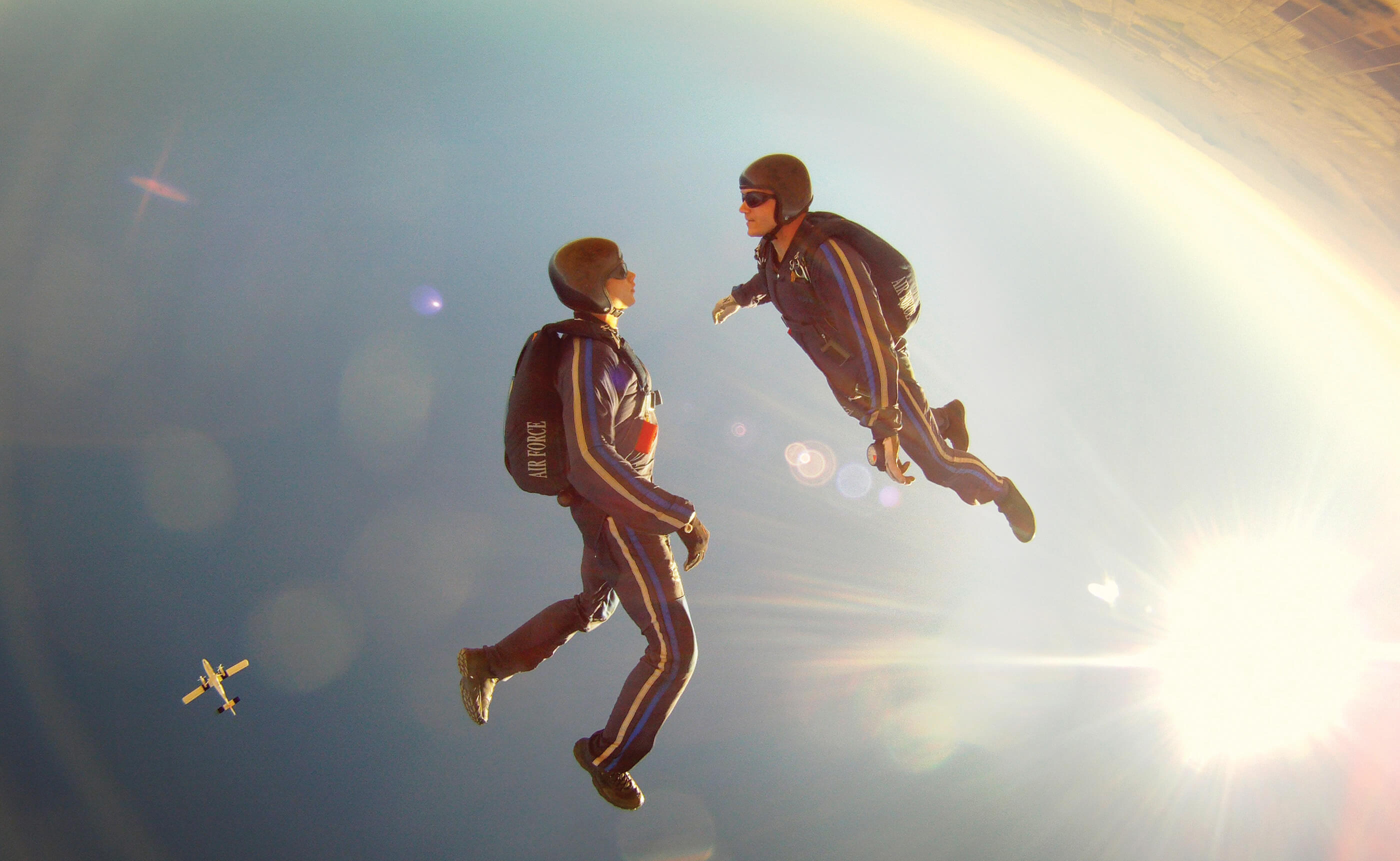Grad Week Commentary: Defining leaders of character at the 306th Flying Training Group

(U.S. Air Force photo)
By Col. Joel DeBoer, 306th Flying Training Group commander, and Maj. Daniel Castle, 306th FTG executive officer
U.S. AIR FORCE ACADEMY, Colo. — The goal of the 306th is not solely to produce jumpers or pilots, but officers and leaders of character. We do that extremely well. When grads are asked what aspect of the Air Force Academy influenced their character the most, they say one thing: “the airfield.”
Like steel, character is forged through a process of continual refinement, which includes overcoming fear, adversity and doubt. Our Airmanship programs at the Academy develop and forge character that is pure and strong.
The Academy recruits top candidates from across the country, young men and women who have succeeded in most areas. Whether sports, academics or leadership, our cadets are the best — yet many have not faced adversity or failure. Its adversity and failure; not success, that defines character. Adversity finds us and failure is inevitable. Overcoming adversity and failing requires practice. A leader of character will fail, learn, and succeed the next time. Successful people who haven’t practiced failure tend to crumble.
The 306th Flying Training Group provides incredible opportunities for cadets to refine their character, overcome adversity, and fail and learn. Regardless of their prior experience, there is something profoundly different about throwing yourself out of an airplane with nothing but a parachute, attempting to land an aircraft knowing you only get one chance, or proving you can fly by yourself without the safety net of an instructor. We provide these experiences at a basic level, and to those seeking even more difficult challenges, an advanced course.
We train and challenge cadets and set the foundation of excellence in all future training programs. After they graduate, cadets join officers from other commissioning sources to attend initial flight training at the 1st Flying Training Squadron in Pueblo.
Freshmen cadets are challenged first through an Introduction to Soaring program; they fly four times in a glider to become familiar with the basics of flight. For many, this is the first time they’ve been at the controls of an aircraft and faced the risk. A smaller group spends more time at the airfield during their sophomore year, where they demonstrate the ability to make a solo flight in a sailplane.
From this group, a select few compete for a chance to join an elite team. These 75 cadets spend an entire year upgrading to become the Air Force’s youngest instructor pilots. These soaring “IPs’ become the primary cadre to teach freshmen cadets. Twelve are selected to become part of the 94th Flying Training Squadron’s aerobatic demonstration or sailplane racing teams.
Those cadets who don’t get the chance at advanced soaring have the opportunity to go through the 98th Flying Training Squadron’s basic free-fall program, where they have five chances at solo skydiving to earn their parachutist badge. The 306th FTG is the only place in the world where a student’s first freefall skydive is solo.
Following basic jump, cadets have the chance to compete to join the Wings of Green. Out of hundreds, only 25 are selected to train for one year to join the prestigious Wings of Blue. Not only do the Wings of Blue instruct cadets in the basic jump program, they join the competition team or demonstration team. The demonstration team performs across the U.S. to more than 2 million spectators annually. The competition team competes in the U.S. Parachute Association’s National Collegiate Parachuting Championships and the U.S. National Skydiving Championships, and often proves the 98th FTS is among the best parachuting teams in the country.
We even provide a challenge for those admitted to the Academy with aviation experience or a private pilot’s license. Those freshmen cadets can try out for the Academy’s Flying Team. Nine cadets are selected to join the team and compete in regional and national championships after an extensive process measuring their aviation abilities and knowledge.
Our culminating airmanship experience for sophomore cadets is the 557th Flying Training Squadron’s powered flight program. There, cadets take this nine-flight program with the finale being a solo flight for those proficient.
Our programs confront adversity, fear, doubt and failure. Cadets challenge themselves like no other program here. Most succeed and some fail, but we know that failure often forms the cornerstones of future successes. All cadets walk away from the airfield with stronger character. And that’s what it’s about.
Congratulations to the Class of 2019. We’re very proud to have been part of your Academy experience.
[Editor’s note: The 306th FTG, assigned to Air Education and Training Commander, provides management and oversight of Academy airmanship programs involving 2,500 cadets annually and of the U.S. Air Force Initial Flight Training program involving approximately 2,200 undergraduate flight training candidates annually. The group ensures powered flight, soaring and parachuting courses contribute measurably to the leadership and character development of cadets. Additionally, the group ensures quality initial flight training and identifies those officers with the ability to succeed in follow-on undergraduate flight training.]